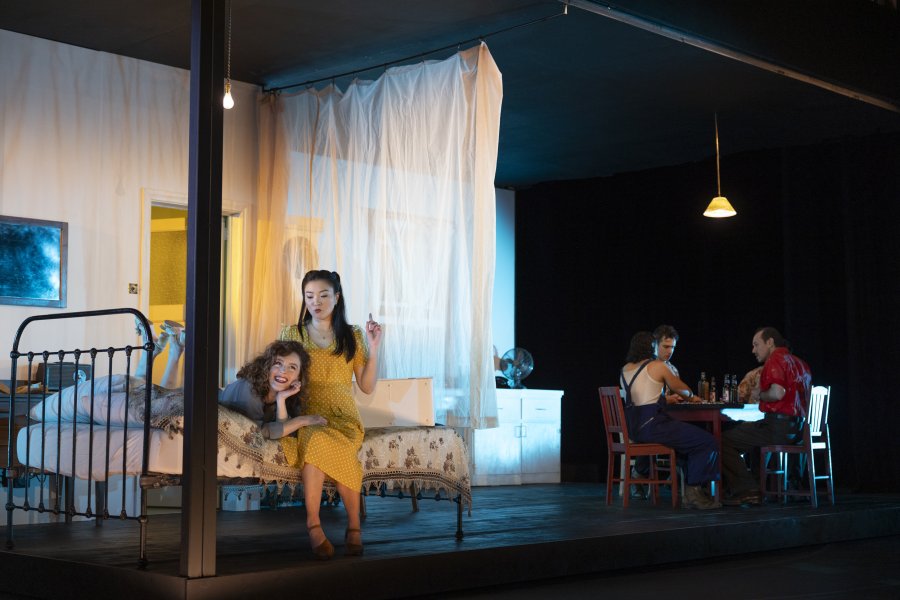By Carissa Shale
Tennessee Williams’ ‘A Streetcar Named Desire’ is a production that has captivated theatregoers and cinephiles around the world, gracing stage and screen countless times. Its momentous reputation has been carved by the performances of Vivien Leigh, Marlon Brando, and Australia’s own Cate Blanchett. Given this daunting legacy, it’s no surprise that MTC’s Artistic Director, Anne-Louise Sarks, decided to steer clear of a classic portrayal when undertaking this mammoth task. Instead, Sarks aimed for a fresh, unique interpretation of the timeless production, hoping to display the relevance of the themes explored in modern life.
In reimagining the iconic characters, the production aims to portray a cast reflective of our world. While individual performances showcase moments of skill and charisma, overall, MTC’s interpretation of ‘A Streetcar Named Desire’ delivers a rather confusing version, veering towards dark comedy and satire.
Nikki Shiels undertakes the challenging role of Blanche DuBois, a character synonymous with fragility and inner turmoil. Shiels brings a commanding presence, magnetic energy, and strength to the stage, delivering clever remarks and witty one liners with grace. However, while Shiels commands the stage, displaying clear skill, technique, and presence her bold performance is juxtaposed with the inner turmoil and vulnerability that is inherent of Blanche, often leaving the audience uncertain of her true nature.
Mark Leonard Winter’s interpretation of Stanley Kowalski brings a fresh humanity and awkwardness to the character, showing a new side of Stanley that hasn’t been seen before. However, Winter’s portrayal lacks the menacing brutality essential to Stanley’s character, presenting him as cringe worthy son occasion. This is a great departure from the intimidating presence that in the past, has defined the role.
Mel Page’s set and costume designs were simple, yet functional. The rotating set plays an important part of the production, allowing scenes to shift seamlessly from the external facade of Stella and Stanley’s home, to the suffocatingly small inside of the New Orleans dwelling. While the set adds simplicity and practicality to the production, directorial choices show the actors passing through the invisible walls of the house, creating jarring moments of disorientation for the audience.
The underlying themes of desire, loss, fear, violence, redemption, truth and lies, display a universality capable of resonating with a modern audience. Many of these notions remain at the forefront of contemporary life, despite being written almost 80 years ago. However, while it seemed that this reimagining had a clear and logical path toward success, in reality, this ambitious production ultimately fell short of expectations, delivering a production that felt disjointed and lacked the nuanced emotional depth that defines Williams’ work.
Image Pia Johnson





